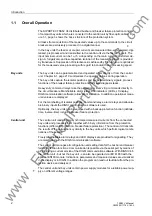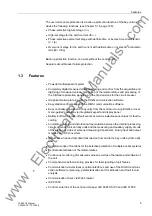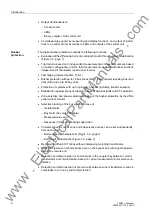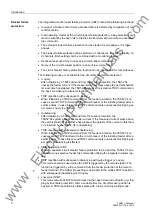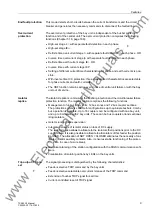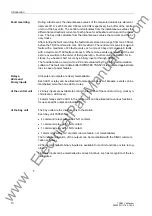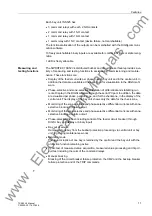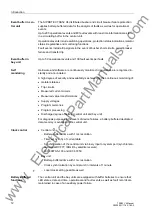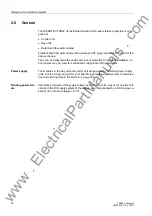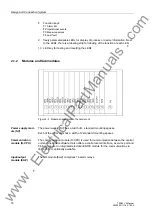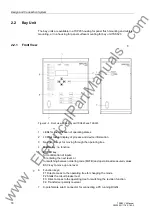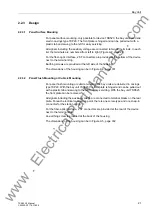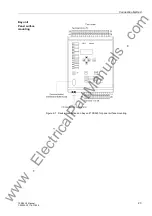
Features
9
7SS52 V4 Manual
C53000-G1176-C182-3
End fault protection
This mode detects short-circuits between the current transformers and the circuit
breaker and generates the necessary commands to disconnect the faulted line.
Overcurrent
protection
The overcurrent protection of the bay unit is independent of the busbar protection
function and of the central unit. The overcurrent protection comprises the following
functions (Chapter 5.16, page 188):
•
High-set stage I
>>
with separate fault detection in each phase
•
High-set stage IE
>>
•
Definite time overcurrent stage I
>
with separate fault detection in each phase OR
•
Inverse time overcurrent stage Ip with separate fault detection in each phase
•
Definite time earth current stage IE
>
OR
•
Inverse time earth current stage IEP
•
Setting of different current/time characteristics for phase and earth currents is pos-
sible.
•
With inverse time O/C protection: three standardized characteristics are selectable
for phase currents and earth currents.
•
The CBF function remains active even in case of central unit failure or with the bay
unit out of service.
Isolator
replica
The isolator replica is common for the busbar protection and the circuit-breaker failure
protection function. The isolator replica comprises the following functions:
•
Management of up to 48 bay units, 12 bus zones and 12 bus coupler sections:
The protection system is suitable for configurations up to quintuple busbars. Combi-
bus operation is possible. Up to 16 couplers can be configured with one bay unit,
and up to 8 couplers with 2 bay units. These can be bus couplers or/and sectional-
izing isolators.
•
Isolator running time supervision
•
Integrated storage of isolator status on loss of DC supply:
The isolator replica allows to allocate to the isolators their positions prior to the DC
supply failure. It is also possible to allocate to all isolators of this feeder the position
CLOSED. The allocation of NOT OPEN = CLOSED eliminates the necessity of cal-
ibrated isolator auxiliary contacts. Also, it ensures stable functioning of the protec-
tion even in case of a wire break.
•
Graphical planning of the station configuration with the DIGSI communication soft-
ware
•
Visualization of isolator positions by LEDs on the bay units
Trip output / Trip re-
set
The signal processing is distinguished by the following characteristics:
•
Feeder-selective TRIP command by the bay units
•
Feeder-selective selectable overcurrent release of the TRIP command
•
Extension of busbar TRIP signal for set time
•
Current-controlled reset of TRIP signal
www
. ElectricalPartManuals
. com








